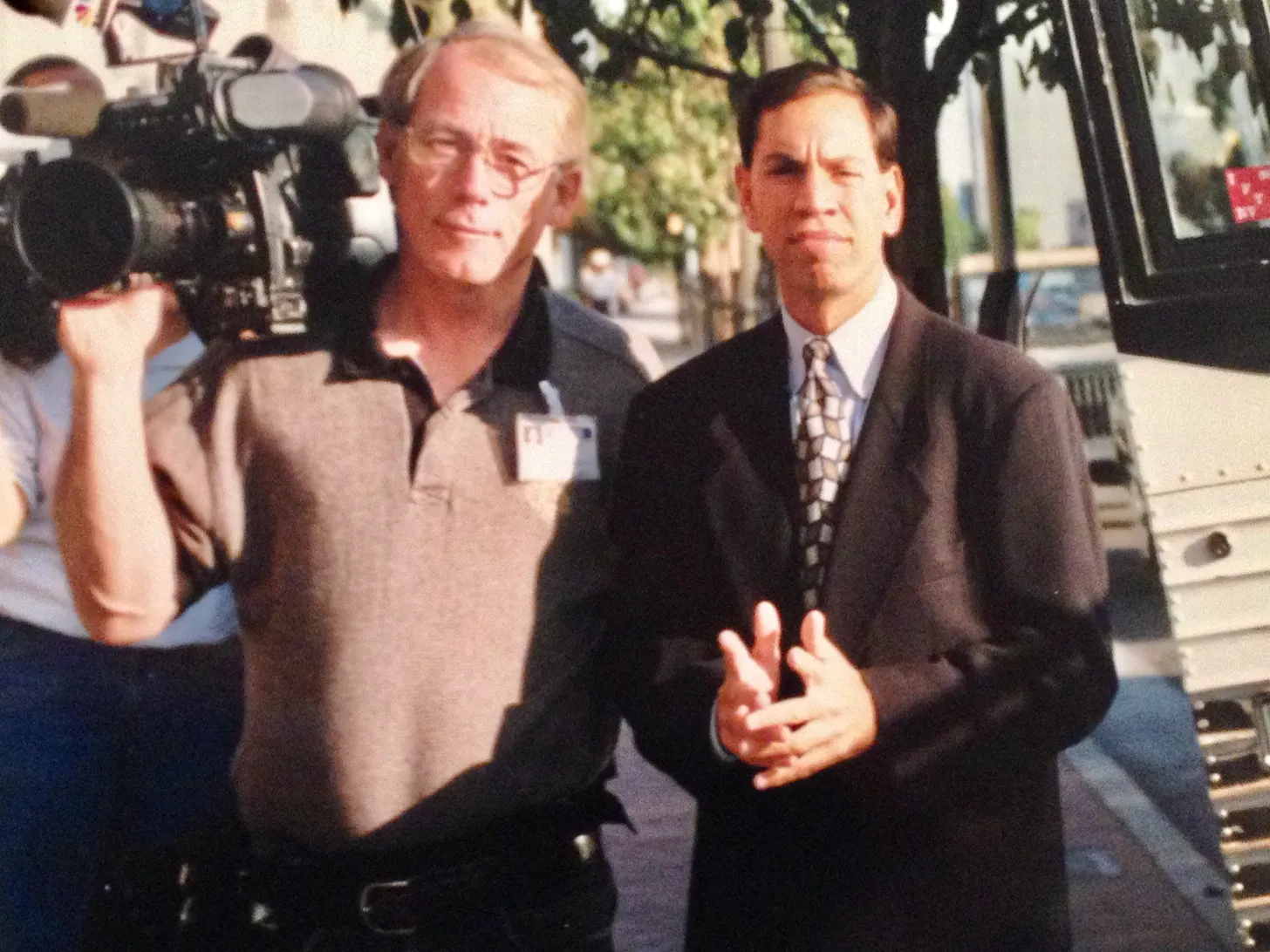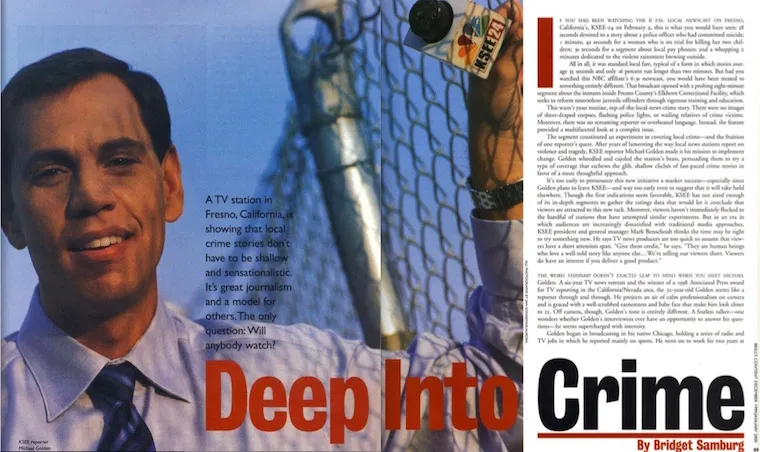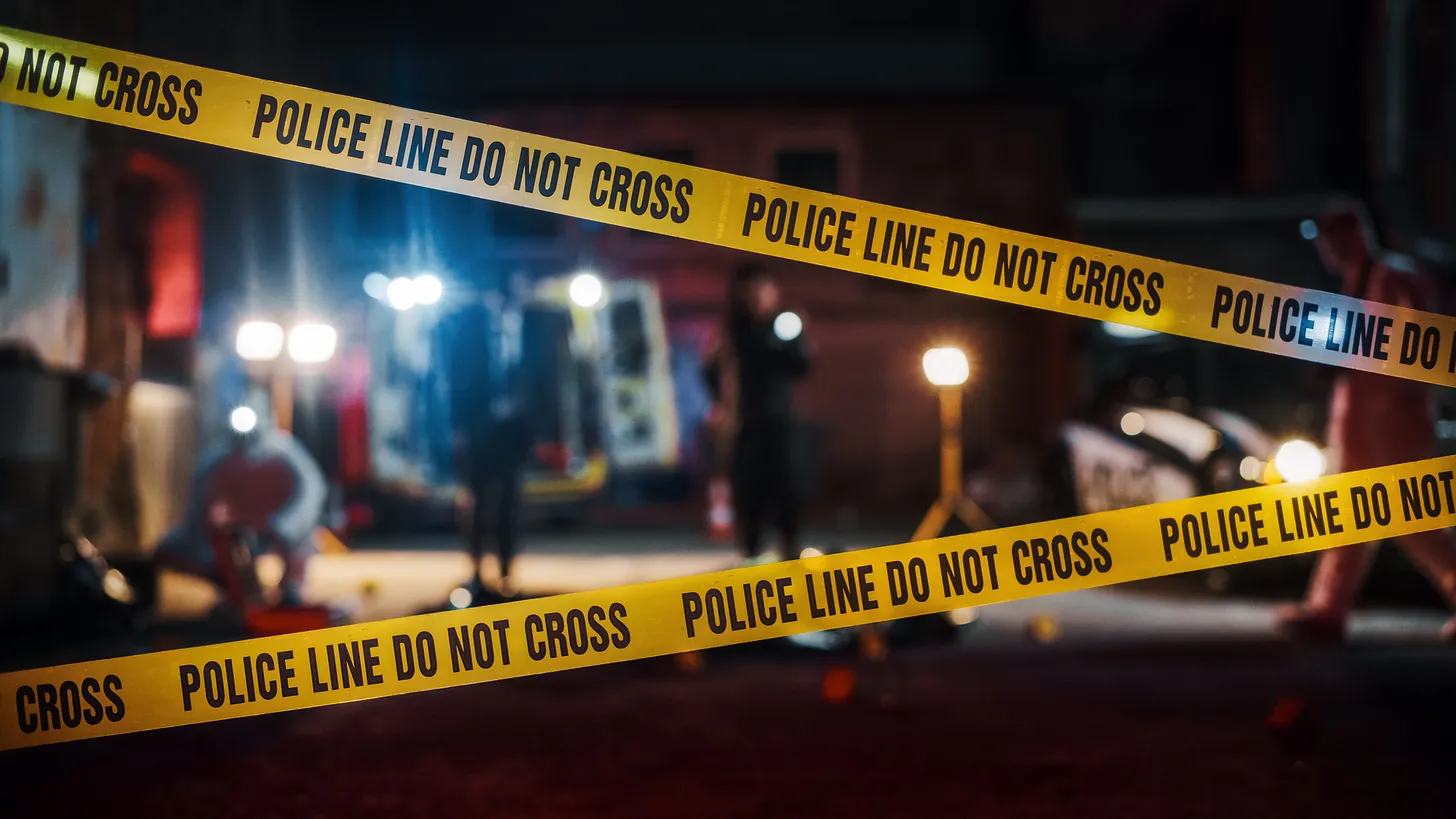I’m in the passenger seat of a van racing 90 miles per hour down a two-lane highway through the mountains of Central California — chasing the police. We’re no more than 100 feet behind a four-car convoy of CHP officers who’re searching for a fugitive who’s just escaped from a local prison. The rush is hard to describe.
This is what happened on my first day working as a reporter at NBC-TV affiliate KSEE in Fresno. I’d just moved there from Iowa after two years at a CBS station in the Quad Cities. My new boss Eric told me I’d only need to come in for a half day to get processed for a security keycard and to meet my new coworkers. But stuff happens.
That evening, my photographer Matt parked the news van at a tourist rest area high up in the mountains — and I did live shots on and off for five hours. I was told later that Eric was in the control room all night, visibly pleased. Live reporting was why he hired me. This guy loved live. All the time. More cowbell.
When I started that job in 1995 at the age of 27, there were a few things that I knew I was naturally good at. One of them was describing things happening around me on a live camera. You could put me at the center of an empty Superdome and I could paint you a portrait of the non-action for hours.
For a while, I really loved doing local TV news. And in California’s San Joaquin Valley — a massive area that sits halfway between L.A. and San Francisco — there was a ton of action going on daily.

Yet what our coverage put the most emphasis on were shootings, traffic fatalities, gang wars, and other similar “breaking news” events that we would hear over a police scanner and then sprint toward to be first on the scene. The stories we led newscasts with were not only nakedly sensational, but almost totally lacking in any type of content that would benefit viewers. I got sick of it.
One morning in the daily assignment meeting, I suggested that I cover a photo exhibit focusing on poverty in the Central Valley. The producers and reporters gathered in the room roared with laughter. When the 5pm producer realized I was serious, he said:
“Are you out of your fuckin’ mind? You’re gonna drive 30 minutes to Madera so you can do a crummy live shot in front of a bunch of depressing black-and-white photos? Not on MY show.”
I laid back into him and did the story anyway. But the assignment sheets remained much the same. More blood.
When I couldn’t stand it anymore, I applied for a grant from a non-profit foundation in New York to do a six-part, long form series about the entire criminal justice system in Fresno — and how we at local news stations could improve our crime coverage. I brought in a panel of a dozen civic leaders to give us guidance on the front end, and then to judge each segment as we went along. They did it all on-camera, and six months later we aired “Behind the Crime” as a one-hour documentary. To our station bosses’ credit, they ran it in prime time with no ads.

My colleagues and I were really proud of what we’d accomplished. Especially the photographers. But it didn’t change much. And I just couldn’t go back to the daily chase. I gave my notice, and two weeks later I was on a plane to Israel. No more local news. Not that way.
The sad fact is that 30 years later, it is much the same.
The model of local TV news — and nowadays this applies to the national “news” channels as well — is that compelling video attracts viewership. Whether it’s a live hostage situation, a heated political exchange or a team of 150 rescuers racing to save the life of a climber trapped in a cave — news executives insist that viewers only want to watch the dramatic stuff. Action. Tension. Preferably live. The more viewers attracted, the higher the ratings. Paid ads appear in every “show.” And without enough viewers (ratings), either the prices drop for commercial spots, or sponsors just bolt altogether.
To be clear, I’m not casting aspersions on the individuals who’ve built careers in the news media. They’re making a living, and a great number of them do terrific reporting. Many are my friends.
But even at the highest levels, they are not immune to the pressures of the news business — because it is a business. The question is: should it be?
Perhaps we would be better served by journalists who could at least choose to exclusively focus their reporting on stuff that they think will make a difference in our lives — without any profit motive influencing the process.
This notion may sound idealistic, but nonprofit news organizations are not a new idea. They’ve actually been around for a while, here and there, doing important work. Propublica, Solutions Journalism and Factcheck are great examples. Founded in 2007, Propublica’s investigations have uncovered all sorts of corruption and have led to meaningful change. As well, the American Journalism Project continues to increase the number of nonprofit news enterprises it funds.
The problem is that most of these resources have been targeted toward nonprofit print and digital media, as opposed to broadcast. Don’t get me wrong — taken alone that’s a very good thing, considering the fact that 2,200 newspapers have shut down since 2005 (more than 360 since 2019).
But even in the age of online media, local television is still a powerful conveyor of information. At times, it can even be the glue that binds a community closer together.
Just last week, a new national coalition of nonprofit organizations called Press Forward announced in a statement that it will be awarding $500 million to “revitalize local news.” This is another good development — yet the announcement does not specify potential projects and says nothing about local TV newsrooms. It’s quite possible that this is because grant-making does not start until 2024. I’ll be watching. And hoping.
When journalists are free to report on consequential subjects with care and context, they’re capable of doing the kind of excellent reporting that serves both our local communities and our country. We need to free up a whole lot more of them.


